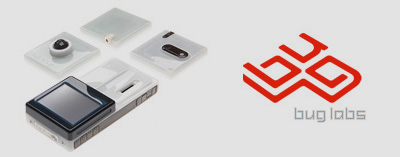I just attended the one day course, Presenting Data and Information, taught by Edward Tufte. Edward Tufte is widely considered the godfather of information design and has written several books on the subject, including Visual Explanations, Envisioning Information, The Visual Display of Quantitative Information, and Data Analysis for Politics and Policy. He writes, designs, and self-publishes his books on analytical design, which have received more than 40 awards for content and design. He is Professor Emeritus at Yale University, where he taught courses in statistical evidence, information design, and interface design.The course itself was very informative and well organized. Mr Tufte is well spoken and engaing due to his passion for teaching on the subject of visualizing data. Not only did everyone receive all four of his published books…as part of the cost of the course, but he actually uses these books as the course material. It was like being back in design school, actually. Continue reading
Build Your Own Bug
“BUG is a collection of easy-to-use, open source hardware modules, each capable of producing one or more Web services. These modules snap together physically and the services connect together logically to enable users to easily build, program and share innovative devices and applications. With BUG, we don’t define the final products – you do.”
My Advice(Rant) to Web Developers…
I felt compelled to offer up some advice to front-end web developers, particularly intermediate and/or senior front-end web developers, on how to present themselves for a position in front-end web development.
First off, I’d like to say that I am primarily a Sr. Designer, but also do some lite project/client management in my position. From time to time, I am required to hire contractors for my group to handle front-end development work. We do not have a full time front-end developer on staff, so I have been forced to learn more about the role and responsibility of someone in that position. I get frustrated when I see candidates who say they can code sites using html/css and are still using tables for positioning as well as inline styles. In addition, I still see sites with pages that don’t validate well. Some haven’t even declared a “doctype”!
I am writing this in hopes of helping at least one person, who is experienced and great at what you do, but might be having troubles getting past screeners to land that phone or in person interview.
Monocle
Launched in February 2007, Monocle is a global briefing covering international affairs, business, culture and design. Developed for an international audience hungry for information across a variety of sectors, Monocle’s team of award-winning editors and correspondents have been drawn from The New York Times, The Independent on Sunday, the BBC, CBC and a host of other news and current affairs outlets.
More of a book than a magazine, Monocle’s designed to be highly portable (it’s lightweight and compact) and collectable (it’s thick and robust). On-line, the focus is on broadcasting with a wide array of films, slide shows and audio reports.
Some highlights:
- An interview with Paula Scher of Pentagram
- A novel kind of kindergarten in Tachikawa
- CEO of Lego
UPDATE: Dan HIll’s personal site, City of Sound, Â has a great write-up on the under takings of creating the site for Monocle.com.
Thermo
![]()
“Thermo” is an upcoming Adobe product that makes it easy for designers to create rich Internet application UIs. Thermo allows designers to build on familiar workflows to visually create working applications that easily flow into production and development.
Features
- Use drawing tools to create original graphics, wireframe an application design, or manipulate artwork imported from Adobe Creative Suite tools.
- Turn artwork from Adobe Photoshop, Illustrator, or Fireworks directly into functional components that use the original artwork as a “skinâ€.
- Define and wire up interactive behavior, such as what to do when a user clicks on something, without having to write code.
- Easily design UIs that work with dynamic data, such as a list of contacts or product information, without having access to the actual data source. Design-time sample data can be used as a realistic placeholder when laying out an application, testing interactivity, and choreographing motion.


